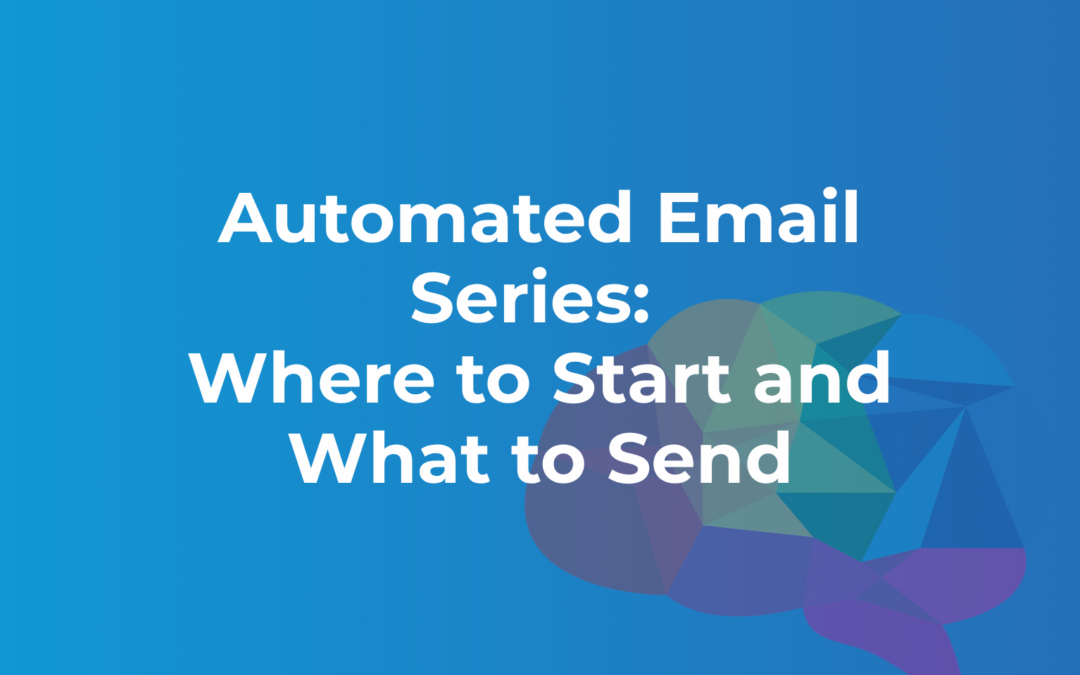Automation sounds big. Complex. Like something you only do when you’ve got a full marketing team, a giant CRM stack, and someone with “Lifecycle Marketing Manager” in their title.
But here’s the truth:
Automated email series can be one of the simplest and highest-return marketing tools in your arsenal — even if you’re running lean.
Done right, they save you time, keep your audience engaged, and make sure no lead or new customer falls through the cracks. And you don’t need a 37-step funnel to get started.
You just need one clear purpose, a few well-written emails, and the commitment to hit “go.”
Start with One Clear Goal
Before you start mapping out sequences and writing subject lines, get crystal clear on why you’re sending this series in the first place.
Ask yourself:
- Is this for new customers, to help them get value fast?
- Is it for leads who haven’t bought yet, to guide them toward a purchase?
- Is it for past customers or subscribers, to bring them back?
Your first automated series should have a single job. Resist the temptation to make it do everything.
The 3 Easiest Automated Series for Startups
If you’re not sure where to begin, here are the three most effective (and easiest to set up) automated series for early-stage teams.
1. Welcome Series
When to trigger: Right after someone signs up or makes their first purchase.
Goal: Build trust, set expectations, and make them feel confident they made the right choice.
Your welcome series can be just 2–3 emails:
- Email 1: A genuine welcome + quick reminder of the value you offer.
- Email 2: A “getting started” guide — how to use your product or get the most from your service.
- Email 3: An invitation to engage — reply to your email, follow you on LinkedIn, join your community.
2. Lead Nurture Series
When to trigger: When someone signs up for more info but hasn’t purchased.
Goal: Show them how you solve their problem, so they feel confident moving forward.
Ideas for 2–3 emails:
- Email 1: Share a quick tip or insight that directly addresses their challenge.
- Email 2: Tell a customer success story.
- Email 3: Invite them to take the next step — book a call, start a trial, or download something useful.
3. Re-Engagement Series
When to trigger: When subscribers or customers go quiet.
Goal: Remind them why they liked you in the first place.
Ideas for 2–3 emails:
- Email 1: A friendly “We miss you” note + a quick update on what’s new.
- Email 2: Highlight something they haven’t seen yet — a feature, resource, or success story.
- Email 3: Offer an incentive or reason to return (special offer, exclusive access, early peek).
Keep It Simple and Sustainable
The biggest mistake founders make with automation? Overbuilding.
You don’t need a 12-email “ultimate funnel” to see results.
Start with just 2–3 emails per series. Keep them short. Use plain, human language. Skip the overly polished HTML if you don’t have a designer — a simple plain-text email often performs better anyway.
And remember: automation isn’t “set it and forget it.” It’s “set it, watch it, tweak it.”
What to Track and Tweak
You don’t need to drown in analytics — focus on a few key metrics:
- Open rate: Are your subject lines getting attention?
- Click-through rate: Is your content prompting action?
- Conversions: Is the series actually achieving the goal you set?
If you see drop-offs, that’s your cue to adjust the timing, rewrite the call-to-action, or make the content more relevant.
Automation Without the Overwhelm
You don’t have to automate everything.
You just have to automate the right things.
Start with one series that solves one problem. Let it run. Learn from it. Then build from there.
When you’re ready to take automation to the next level, adding smarter targeting, more personalized flows, and scalable email strategies, Mathlete Marketing can help you get there.
Because when you use automation well, it doesn’t just save time.
It builds relationships, earns trust, and helps your startup grow — while you get back to building the business you set out to create.

